fake identification industry
Introduction
In an increasingly digital world, identity plays a crucial role in various facets of daily life. From accessing government services to entering establishments, a person’s identification determines their access to opportunities, goods, and services. However, the desire for anonymity, accessibility, or circumventing legal barriers has fueled a growing underground market: the fake identification industry. This sector, though illegal, thrives within the dark web and beyond, making use of innovative technologies and catering to a wide range of clientele.
This in-depth analysis will explore the fake identification industry from multiple angles, detailing the inner workings of the market, the evolving technologies that enable it, the motivations of its users, and the impact it has on society. Furthermore, it will assess the countermeasures being taken to combat the industry and analyze its growth potential.
1. Understanding the Fake Identification Industry
1.1 Definition and Scope
The fake identification industry encompasses the production, distribution, and sale of counterfeit identification documents. These include false passports, driver's licenses, social security cards, and other legal documents that are either partially or completely fraudulent. The fake ID industry exists in a legal gray area, with much of its business occurring in online spaces like the dark web, which offers anonymity and convenience for both buyers and sellers.
Counterfeit identification documents have a variety of uses, from enabling underage individuals to purchase alcohol or enter restricted areas, to more serious implications like committing identity fraud, evading law enforcement, or facilitating illegal immigration. With an increasing reliance on identification for both physical and digital interactions, the demand for such services has surged.
1.2 History of Fake Identification
Fake identification is not a new phenomenon. The creation of forged documents dates back centuries when criminals and political dissidents sought to assume new identities to evade capture or circumvent restrictive laws. In the modern age, however, the production and dissemination of fake IDs have taken on a highly sophisticated, tech-driven form. Early methods often relied on physical forgery and imitation, but the 21st century saw the rise of digital technologies that enable high-quality replication of official IDs, indistinguishable from legitimate ones.
The expansion of online black markets and the development of the dark web have further facilitated the growth of this industry. As more everyday transactions and services require official identification, the need for such products among certain groups has proliferated.
2. Product Features of Fake Identification
2.1 Technological Advancements
The modern fake ID industry leverages several advanced technologies, making their products increasingly difficult to detect. Some of the key technological features include:
High-Resolution Printing: Modern counterfeiters use high-resolution printing technologies that produce cards indistinguishable from authentic IDs. This includes the replication of holograms, UV features, and micro-printing present on government-issued IDs.
Magnetic Stripes and RFID Chips: Some sophisticated operations include encoding magnetic stripes and RFID chips, further increasing the authenticity of fake IDs. These features allow fake IDs to pass through electronic scanners and verification machines, which are often used by law enforcement or businesses.
Digital Watermarks: Digital watermarks, present on many modern IDs, are another feature that is increasingly being replicated. Counterfeiters employ various digital techniques to reproduce these watermarks, adding to the legitimacy of their products.
Optical Variable Devices (OVDs): These devices, such as color-shifting inks or holographic images, are used to secure IDs and are now also being simulated in high-quality fake IDs.
Plastic Materials and Lamination: Authentic IDs are usually laminated for durability, and the fake ID industry mimics this by using comparable materials and techniques, making visual and tactile differentiation almost impossible without specialized equipment.
3. Target Audience and Demographics
3.1 Motivations Behind Acquiring Fake IDs
There is no singular archetype for the typical fake ID user. Instead, a diverse set of motivations drives individuals across different age groups, professions, and demographics to seek out counterfeit identification.
Underage Buyers: One of the largest demographics purchasing fake IDs consists of minors attempting to circumvent legal drinking age laws. This age group uses fake IDs to enter bars, clubs, or purchase alcohol and tobacco.
Fraudsters and Criminals: Another significant demographic includes individuals seeking fake identification for more nefarious purposes, such as identity theft, financial fraud, or other illegal activities. Fake IDs enable criminals to assume false identities, open fraudulent bank accounts, or access restricted services.
Immigrants and Asylum Seekers: In some cases, people resort to using fake identification to avoid detection by authorities, especially immigrants seeking employment or residence in countries where their legal status is precarious.
People Seeking Anonymity: With increasing concerns about data privacy and government surveillance, some individuals seek fake IDs simply for the sake of anonymity. This is particularly relevant in online spaces where virtual identities can serve as a layer of protection from hackers or invasive third-party data collectors.
3.2 Geographic Reach
The fake ID market has a global footprint. While much of the demand comes from countries like the United States, Canada, and the European Union due to strict age and identification laws, the production of fake IDs often occurs in countries where regulations around such activities are more lenient. Nations in Southeast Asia, Eastern Europe, and even parts of Latin America are known for their underground counterfeit ID production hubs.
4. Market Dynamics and Trends
4.1 Market Size and Growth Potential
The fake identification industry has seen exponential growth in recent years, primarily driven by two major factors: advancements in technology and the widespread use of identification in both physical and digital transactions. The convenience of online markets, including dark web platforms, has made fake IDs more accessible than ever before.
Though difficult to quantify due to the illicit nature of the market, estimates suggest that the fake ID industry generates millions of dollars annually. Many counterfeiters run highly organized businesses, complete with customer service, bulk ordering, and even return policies. Online reviews, user ratings, and encryption make it easier for consumers to buy fake IDs with relative safety.
4.2 The Role of the Dark Web
The dark web has been instrumental in the fake ID market’s growth. On platforms like Silk Road (before its shutdown) and its successors, fake identification services are among the most sought-after illegal commodities, alongside drugs, weapons, and hacking tools.
In these markets, sellers often compete by providing not only high-quality counterfeit IDs but also additional features like guaranteed delivery, real-time tracking, and sophisticated encryption for transactions. The dark web’s anonymity has allowed the fake ID market to evade law enforcement and continue expanding despite increased scrutiny.
5. Challenges and Countermeasures in the Fake Identification Industry
5.1 Law Enforcement and Government Regulations
Governments across the world are ramping up efforts to curb the production and distribution of fake IDs. Some of the more common tactics include:
Stricter Penalties: Many countries have increased the severity of punishments for both possession and production of fake identification documents. This includes hefty fines, imprisonment, and even permanent bans from certain services or sectors.
Digital Authentication Systems: One of the biggest challenges for counterfeiters is the rising implementation of digital authentication systems that make it easier to verify the legitimacy of a document. Blockchain technology is being explored to create immutable records that make it extremely difficult for counterfeit IDs to go unnoticed.
Enhanced ID Security Features: Governments are continuously updating the security features embedded in official IDs, adding elements like biometric data, complex holographic designs, and machine-readable elements that are incredibly difficult to replicate accurately.
5.2 Private Sector Involvement
Businesses that rely heavily on identification verification, such as bars, clubs, airports, and financial institutions, are also stepping up their efforts to detect fake IDs. Some of the key strategies include:
ID Scanners and Biometric Readers: Businesses are increasingly employing high-tech scanners that not only check the magnetic strips on IDs but also cross-reference with external databases to verify authenticity.
Facial Recognition: Facial recognition software is being used in combination with ID verification to ensure that the holder of the ID matches the person on the record, making it harder for criminals to use someone else’s fake ID.
6. Ethical Considerations and the Societal Impact of Fake IDs
6.1 The Fine Line Between Necessity and Illegality
The fake identification industry operates in an ethically gray space. While it is unequivocally illegal, the motivations of individuals seeking fake IDs vary widely. For some, it is a means of survival or circumvention of unjust laws, particularly in cases of immigrants or political dissidents. For others, it represents a means to engage in potentially harmful activities like underage drinking or financial fraud.
6.2 Societal Impact
The impact of fake IDs on society extends beyond individual usage. For one, it undermines legal structures that rely on accurate identification to function. Law enforcement, public services, and private businesses alike depend on the integrity of ID systems to maintain trust, efficiency, and security. A growing black market for counterfeit IDs poses a threat to this trust, with potentially severe consequences.
Conclusion
The fake identification industry is a complex and evolving entity. As technology advances, so does the sophistication of counterfeiters, creating a thriving underground market with serious implications for law enforcement, businesses, and consumers alike. While efforts to combat the industry are underway, the demand for such services remains high, driven by a combination of legal restrictions, economic necessity, and the human desire for anonymity or evasion.
Ultimately, the fake ID market serves as a reminder of the ongoing battle between regulation and innovation, legality and necessity, as societies worldwide continue to adapt to a changing digital and physical landscape.
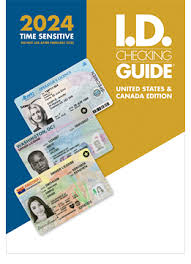 Underage Drinking
Underage Drinking
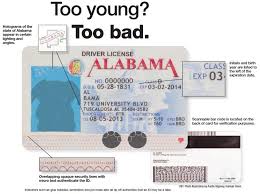 Tennessee laws on fake IDs
Tennessee laws on fake IDs
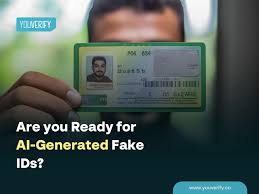 ID market trends
ID market trends
 identity privacy
identity privacy
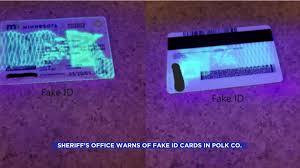 advanced ID technology
advanced ID technology
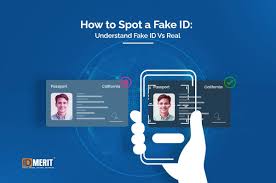 fake ID technology
fake ID technology
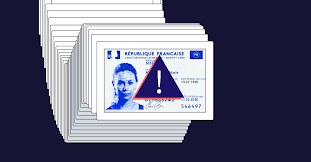 ID verification loopholes
ID verification loopholes
 fake identification industry
fake identification industry
